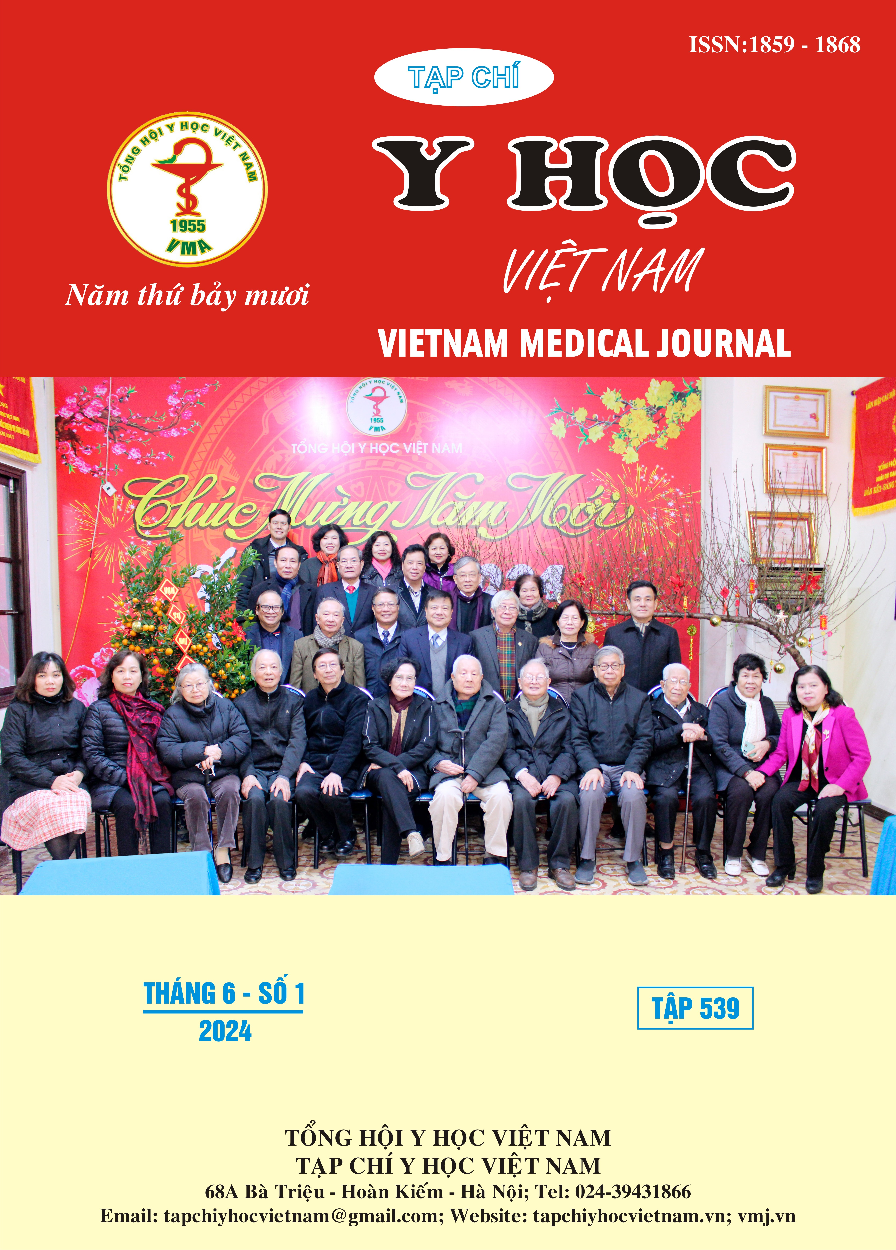EVALUATING PREGNANCY OUTCOMES OF IUI AND THE RELATIONSHIP FROM SEMEN PARAMETERS WITH IUI RESULTS AT HANOI MEDICAL UNIVERSITY HOSPITAL IN 2019 - 2020
Main Article Content
Abstract
Objective: Evaluate pregnancy outcomes of IUI and the relationship from semen parameters with IUI results at Hanoi Medical University Hospital in 2019 - 2020. Subjects and research methods: cross-sectional description, choose a convenient sample. Results: The clinical pregnancy rate according to the number of IUI cycles was 14.6%; according to the total number of patients is 17%. Factors related to IUI results: A high percentage of sperm with normal morphology increases the pregnancy rate (19.5 times). IUI effectiveness is low when the sample has a total number of motile sperm before filtration < 10 million, a percentage of normal sperm morphology < 4%, and a total number of motile sperm after filtration < 5 million. In cases with normal sperm morphology < 4% but the total number of motile sperm is high, the possibility of pregnancy after IUI is still high (both cases became pregnant). Conclusion: IUI technique is relatively simple, quite safe, relatively highly effective and lower cost than other techniques so it can be widely applied and for the right indications. Normal sperm morphology is usually ≥ 4%, the total number of motile sperm before washing is ≥ 10 million, the likelihood of IUI success is high.
Article Details
Keywords
Intrauterin insemination (IUI)
References
2. Nguyễn Khắc Liêu. Đại cương về vô sinh, Bài giảng sản phụ khoa, Bộ môn phụ sản trường Đại Học Y Hà Nội. Nhà xuất bản Y học Hà Nội.1999; 311-316.
3. Lê Trọng Tuấn và cộng sự. Nghiên cứu đánh giá kết quả bước đầu của phương pháp thụ tinh nhân tạo tại phòng khám hiếm muộn Bệnh viện Đại học Y. Y học thực hành. 2013; 896(3):16-18.
4. Bùi Thị Thanh Tuyền. Nghiên cứu mối liên quan giữa số lượng và chất lượng tinh trùng trước và sau lọc rửa với tỉ lệ có thai của kỹ thuật IUI tại Bệnh viện trường Đại học y Hà Nội. Luận văn Thạc sĩ Y khoa. Trường Đại học Y Hà Nội. 2016.
5. Kleppe M., van Hooff MH., Rhemrev JP. Effect of total motile sperm count in intra-uterine insemination on ongoing pregnancy rate. Andrologia. 2014; 46(10), 1183-1188
6. Nikbakht R., Saharkhiz N. The influence of sperm morphology, total motile sperm count of semen and the number of motile sperm inseminated in sperm samples on the success of intrauterine insemination. Int J Fertil Steril. 2011; 5(3):168-73.
7. Lê Minh Châu. Nghiên cứu mối liên quan giữa chất lượng tinh trùng sau lọc rửa và tỷ lệ có thai bằng phương pháp bơm tình trùng vào buồng tử cung. Luận văn thạc sĩ Y khoa. Trường Đại học y Hà Nội. 2002.
8. Nguyễn Xuân Bái. Nghiên cứu mối liên quan giữa số lượng, chất lượng tinh trùng với kết quả điều trị vô sinh bằng kỹ thuật IUI. Trung tâm công nghệ Phôi - Học viên Quân Y. Tạp chí Y học Việt Nam. 2012; 12(1): 64-67.
9. Luco SM., Agbo C., Behr B. et al. The evaluation of pre and post processing semen analysis parameters at the time of intrauterine insemination in couples diagnosed with male factor infertility and pregnancy rates based on stimulation agent. A retrospective cohort study. Eur J Obstet Gynecol Reprod Biol. 2014; 179:159-162.
10. Koyun Ok et al, The effect of post-wash total progressive motile sperm count and semen volume on pregnancy outcomes in intrauterine insemination cycles. J Turk Ger Gynecol Assoc. 2013; 14(3):142-5.


